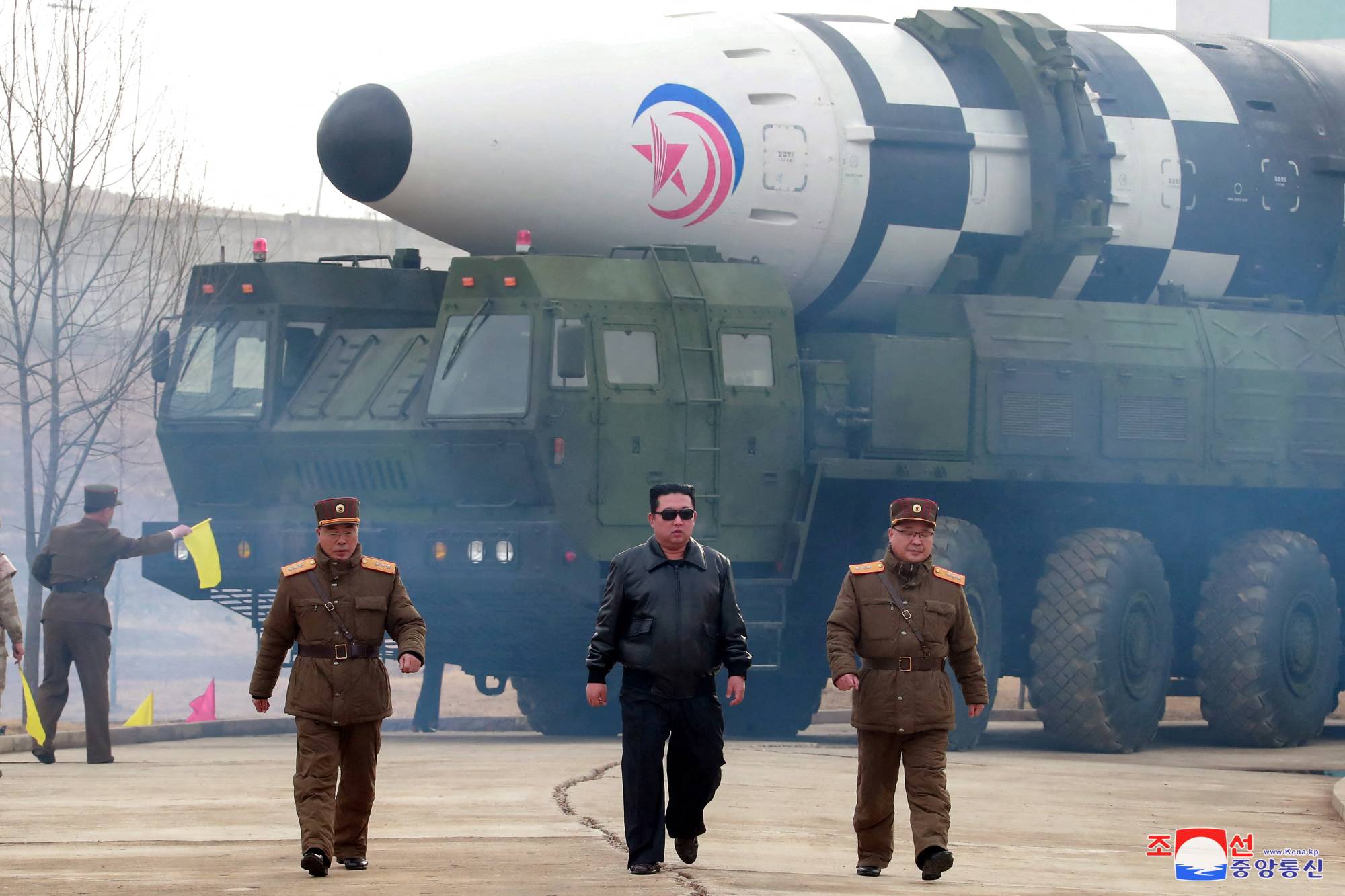अमेरिका र दक्षिण कोरियाले संयुक्त सैन्य अभ्यासको तयारी गरिरहेको बेला उत्तर कोरियाले लामो दूरीको क्षेप्यास्त्र परीक्षण गरेको छ । उत्तर कोरियाले शनिबार आफ्नो राजधानीबाट जापानको समुद्रमा लामो दूरीको क्षेप्यास्त्र प्रक्षेपण गरेको हो ।
अमेरिका र दक्षिण कोरियाको भावी संयुक्त सैनिक अभ्यासबाट क्रुद्ध भएको उत्तर कोरियाले अमेरिका र आफ्नो छिमेकी कोरियाविरुद्ध कडा कदम चाल्ने धम्की दिएको भोलिपल्ट क्षेप्यास्त्र परीक्षण गरेको हो ।
दक्षिण कोरियाली र जापानी सेनाका अनुसार क्षेप्यास्त्र छिमेकीहरूको इलाकामा नपुगोस् भन्ने ध्येयका साथ सावधानीपूर्वक प्रहार गरिएको थियो । एक घण्टामा अधिकतम पाँच हजार सात सय किलोमिटरको उचाइमा पुग्ने तथा करिब नौ सय किलोमिटर पर प्रहार गर्ने क्षमताका क्षेप्यास्त्र प्योङयाङले परीक्षण गरेको हो ।
क्षेप्यास्त्रका जानकारहरूका अनुसार शानिबार परीक्षण गरिएको अन्तरमहादेशीय उक्त क्षेप्यास्त्र गत नोभेम्बरमा उत्तर कोरियाले गरेको शक्तिशाली क्षेप्यास्त्रजस्तै थियो । अमेरिकी मुख्यभूमिसम्म प्रहार गर्ने क्षमताको उक्त क्षेप्यास्त्रको हुनसक्ने उनीहरूको अनुमान छ ।
जापान सरकारका प्रवक्ता हिरोकाजु मात्सुनोले ओशिमा टापुबाट करिब दुई सय किलोमिटर पश्चिममा रहेको जापानको विशेष आर्थिक क्षेत्रभित्र खसेको क्षेप्यास्त्रबाट कुनै क्षति नभएको बताएका छन् । ओशिमा होक्काइडोको उत्तरी मुख्य टापुको पश्चिमी तटमा अवस्थित छ ।
यसैबीच यूएस इन्डो–प्यासिफिक कमाण्डले उक्त प्रक्षेपणबाट अमेरिकी कर्मचारी, क्षेत्र वा यसका सहयोगीहरूलाई तत्काल जोखिम नभएको बताएको छभने ह्वाइट हाउस राष्ट्रिय सुरक्षा परिषद्ले अनावश्यक रूपमा कोरियाली प्रायद्वीपमा तनाव बढाएको जनाएको छ ।
दक्षिण कोरियाका राष्ट्रपति युन सुक येओलको कार्यालयले उत्तर कोरियाले क्षेत्रीय तनाव बढाएको आरोप लगाएको छ । साथै उसले उत्तरको निन्दा गरेको छ । आर्थिक समस्या र खाद्यान्न समस्याबाट गुज्रिएको प्योङयाङले आणविक हतियार विकासलाई तीव्र गतिमा अघि बढाएर अन्तर्राष्ट्रिय प्रतिबन्ध निम्त्याएको टिप्पणी गरेको छ ।
जापानका प्रधानमन्त्री फुमियो किशिदाले उक्त परीक्षणबारे दक्षिण कोरिया र अमेरिकासँग निकट सम्पर्कमा रहेर कुराकानी गरिरहेको बताउनुभएको छ । उत्तर कोरियाको पछिल्लो कार्यले अन्तर्राष्ट्रिय व्यवस्थालाई उत्तेजित बनाएको बताउनुभएको छ । रासस/एपी
North Korea fired a suspected intercontinental ballistic missile (ICBM) on Saturday, Japan’s Defense Ministry said, with the weapon splashing down some 200 kilometers off Hokkaido’s Oshima Island, inside Japan’s exclusive economic zone (EEZ).
The missile, the first “ICBM-class” weapon to be fired by the North since November, traveled roughly 900 km, hitting a peak altitude of 5,700 km, the ministry said. With a flight time of 66 minutes, the missile was likely flown on a “lofted” trajectory, the ministry added, meaning it had been nearly shot straight up so as to avoid overflying neighboring countries.
Prime Minister Fumio Kishida said Japan had protested the launch, calling it “an outrage” and escalation against “the international community as a whole.”
The Defense Ministry said the ICBM-class weapon was believed to have a range of over 14,000 km, depending on the weight of the warhead and other factors.
“In this case, that would put the entire United States within its range,” Defense Minister Yasukazu Hamada said.
In the city of Hakodate, Hokkaido, an NHK camera captured footage of what appeared to be a fireball falling from the sky at around the time the Defense Ministry estimated the missile to have splashed down. Observers have in the past filmed North Korean missiles appearing to break up or fall into the waters off Hokkaido.
The South Korean military also confirmed the launch of a “long-range” missile, the North’s first launch since the early morning hours of Jan. 1, which it said had been fired from the Sunan area of Pyongyang.
“The North’s long-range ballistic missile launch this time is an act of significant provocation that harms peace and stability not only on the Korean Peninsula but also in the international community,” the South Korean military said in a statement.



प्रतिकृयाहरु